Technology continues to evolve and find innovative ways to make our lives easier. Cameras have become more sophisticated than ever before, from the cameras on our cell phones to professional DSLRs. It is important to understand the types of cameras available to be able to choose the right one for your needs.
The Main Types Of Cameras Available On The Market
- Compact Digital Camera
- DSLR Camera
- Mirrorless Camera
- Bridge Camera
- Medium Format Camera
- Action Camera
- Instant Camera
- Security Camera
- Smartphone Camera
- Drone Camera
- 360 Camera
- Film Camera
- Camcorder
Despite the category of the camera, each camera type comes with its pros and cons. The purpose of this article is to inform you about the features specific to each camera type so that you can choose the one that suits your photography style the most.
Compact Digital Camera
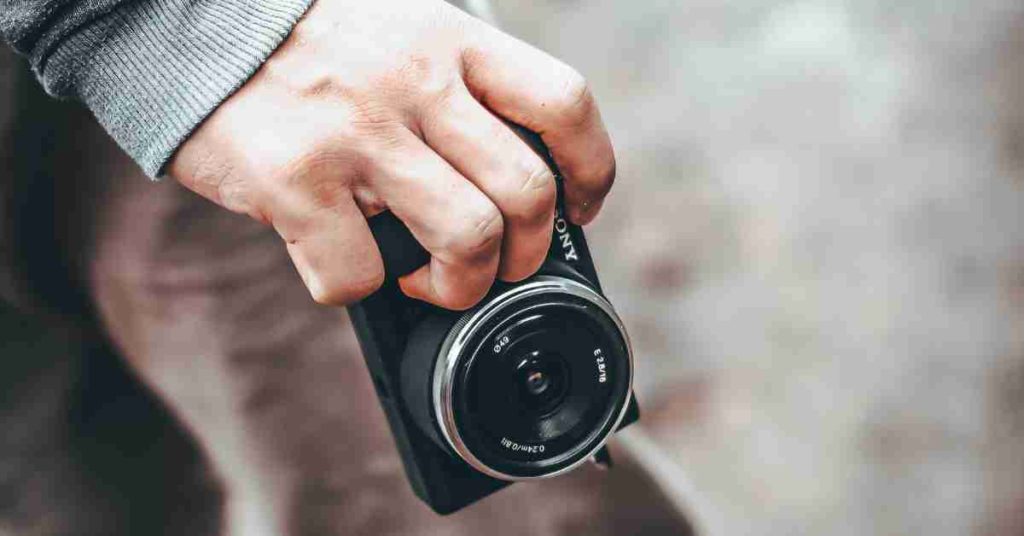
Compact cameras are the most common type of camera available. They are small, lightweight, and easy to use and carry. Compact cameras have a fixed lens, which means that you cannot change the lens. This is a great feature for those who are not looking to spend too much money on a camera. Compact cameras also have an automatic mode, which means that you do not need to know how to use the camera to take pictures. That is why they are also referred to as point-and-shoot cameras. And because of this simple use, they are favorites for vernacular photography.
Low-end and budget compact camera models have focused free lenses with a fixed aperture, while advanced ones come with automatic focus and variable aperture. There are superzoom compact cameras that usually have a zoom lens with usually 30x to 60x optical zoom range and also offer manual settings along with automatic exposure settings. Nowadays, it is common for these cameras to not only be able to zoom but also shoot slow-motion pictures as well plus capture high-resolution images, and offer wireless electronic connectivity (the Internet) for sharing them in person on social networks like Instagram, Facebook, Flickr, etc.
The advantage to compact cameras is that you can just put them in your pocket or purse, so they are more portable than other camera types which may be too big to carry around with you all the time. Compact cameras range in size from pocket-sized to slightly larger than a mobile phone and may come with an LCD or even an electronic viewfinder.
If you are just starting out with digital photography, it’s probably best to go for a compact camera. These have more automatic settings which makes them easy to use for beginners and are more affordable than interchangeable lens cameras like mirrorless and DSLR. You can find some great models from famous brands like Sony, Nikon, Canon, Panasonic, Fujifilm, Sigma, and Samsung.
Pros
- Better image quality than a smartphone camera.
- Small and lightweight with a pocketable size.
- The automatic mode is great for beginners learning photography.
- Easy to use and operate.
- Great zoom capability.
Cons
- The lens is not interchangeable which means that you will have to buy a new camera if you want to upgrade your lens.
- The automatic mode can be a limiting factor by taking away some of the creative control that you have over your shots.
- Poor low-light performance.
DSLR Camera
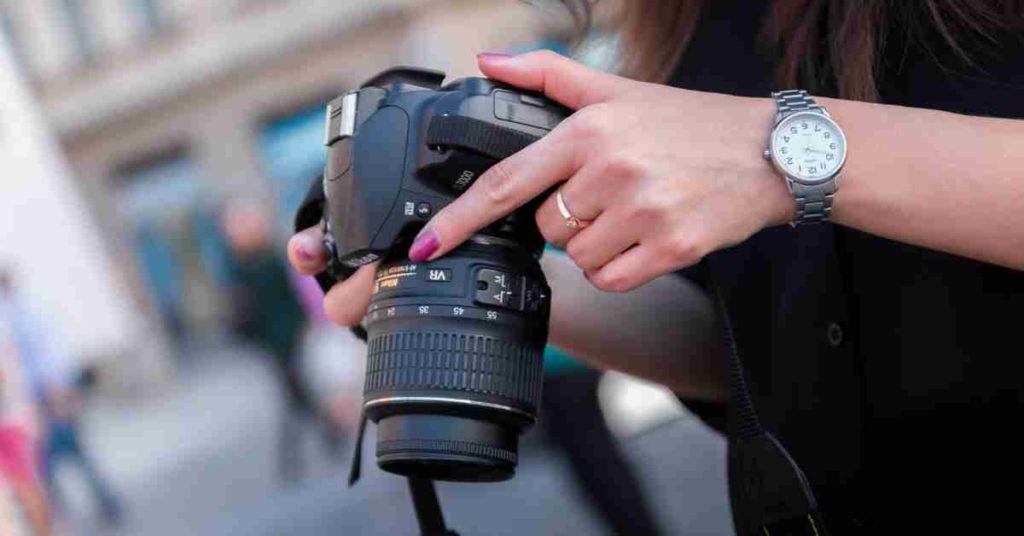
A DSLR (Digital single lens reflex) camera is a classic photography tool that has been used by professional photographers for decades as it offers superb picture quality with a wide range of interchangeable lens options. This type of camera is known as a DSLR because when you look through the viewfinder, it has a mirror that reflects the light coming in from the lens up into the optical viewfinder so you can see in real-time what you are taking a picture of.
These cameras can capture pictures and videos in a variety of formats and resolutions so that you can create truly amazing photos or videos. They also come with sophisticated settings that allow for manual adjustments such as shutter speed, ISO (light sensitivity), aperture, and video recording modes. However, this does result in DSLRs being typically more expensive than other types of cameras. When it comes to choosing the right DSLR camera for your needs, consider your budget, features, and lens options. DSLR cameras can further be divided based on their sensor type, which comes in full frame sensor type for professional-grade DSLRs and APS-C or a crop sensor for beginners and entry-level DSLRs. Nikon and Canon are the leading DSLR manufacturers, while you can also find some best DSLR camera options from Fujifilm, Pentax, and Olympus.
In addition to the higher price point, DSLR cameras are typically larger and heavier than mirrorless and point-and-shoot cameras which can make them harder to lug around on trips or normally use as a daily camera. However, they still offer the benefits of an optical viewfinder, a great selection of lenses, and longer battery life. If you’re looking for high-quality images, DSLR cameras are usually the best option, though require more time to learn how to use them effectively. However, with a little practice, you will be able to take stunning photos that capture the beauty of your subject in all its glory.
Pros
- High-quality image resolution.
- zoom lens
- A large pool of lenses is available
- Optical viewfinder for real-time live view.
- High control over the final image
- Best for professional photography and filmmaking
- Great grip because of bulkier bodies
- Bigger and long-lasting batteries
Cons
- Expensive to buy and maintain (because of the interchangeable lenses)
- Not great for shooting video, as the camera body is locked in place
- More complex than point-and-shoot
Mirrorless Camera
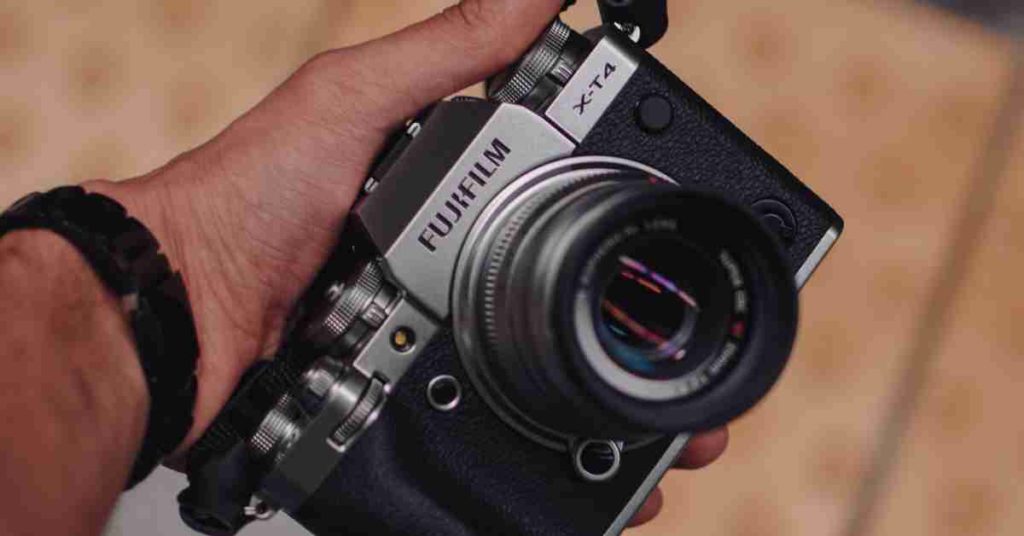
Mirrorless cameras are a new type of camera that combines the features of a DSLR and a point-and-shoot camera. It is called a mirrorless camera because it does not use a mirror to reflect the image from the lens to the sensor. This allows for a more compact camera body without the weight and size penalty of a camera with a mirror. Mirrorless cameras also allow for interchangeable lenses, which makes them more versatile than point-and-shoot cameras.
They have a natural feel and are perfect for photography that involves quick reaction time, spontaneity, and creativity. Additionally, mirrorless cameras often offer high-resolution pictures and videos as well as fast autofocus capabilities so you can capture the moment with ease. These cameras do not typically feature an optical viewfinder – instead, the image is displayed in an electronic viewfinder or LCD screen. This means that when you look through the viewfinder, you’re looking at the actual image that will be captured or in other words, processed footage. Like DSLR, mirrorless cameras also come with Full-frame sensors in professional mirrorless models whereas beginner’s mirrorless models usually come with APS-C sensors, however, there are also some models with smaller micro-four-thirds sensors. Sony leads when it comes to manufacturing the best mirrorless cameras, however, Canon, Nikon, Fujifilm, and Panasonic also make some great models.
Mirrorless cameras are good for those who want to have more control over their pictures and don’t mind using a screen on the back of the camera to preview photos and videos. Because the mirrorless camera is smaller than a DSLR it’s better for those who want to travel around with their camera and take it with them wherever they go. However, mirrorless cameras are more expensive than other types of cameras, so if the price is an important factor for you it may be worth looking into another type first.
Pros
- Versatile. You can use a growing range of lenses, including ones that are made by third parties. Lenses that you already own for your DSLR camera will work with your mirrorless.
- Offers great video quality
- Electronic viewfinder (EVF) offers more on-screen commands
- Offers great in-built image stabilization (IBIS)
- Offers High-resolution sensors and can produce sharp images.
- Autofocus is fast and accurate.
Cons
- Expensive.
- Shorter battery life.
Bridge Camera

Bridge cameras are designed to offer the functionality of a DSLR but in a smaller and lighter package. They typically have an electronic viewfinder (EVF) rather than an optical one and are generally much more compact than a DSLR.
The main advantages of bridge cameras are their size and weight. The viewfinder is usually a live feed from the sensor, so there’s no delay between when you see something through the viewfinder and when it appears in your photo. Moreover, it comes with a fixed lens, usually with incredible zooming capabilities.
A bridge camera is also usually much more affordable than a DSLR.
The disadvantage of bridge cameras is that they tend to have smaller sensors than a DSLR, which means their image quality isn’t as good as that of a DSLR. They’re also generally not as fast as DSLRs, which means they can’t shoot as many frames per second.
Bridge cameras can be used for photography activities such as traveling, taking family photos, or documenting special occasions. Additionally, they are perfect for photographing subjects that do not always require the high resolution of a DSLR camera, such as close-ups or landscape photography. Sony, Canon, Nikon, and Panasonic are the leading brands when it comes to bridge cameras.
Bridge cameras are good for those who want a camera that’s easy to use and takes good pictures but don’t want to spend a lot of money on a DSLR. They’re also good for those who want something that’s bigger than a point-and-shoot camera, but smaller than a DSLR. Moreover, they’re good for those who travel around but don’t want to carry a DSLR camera with them.
Pros
- Smaller and lighter than DSLR and mirrorless, and hence more portable
- Affordable in price.
- Better image quality than a point-and-shoot camera.
- Easy to use.
- Versatile zoom lenses.
Cons
- Lower image quality than DSLR and mirrorless.
- Fixed lenses.
- Limited manual control.
Medium Format Camera

In earlier days, a medium format camera referred to a highly professional camera with 120 mm film. Today it’s more precisely called a digital medium format camera and it comes with a sensor size similar to 120 mm film. Here we are talking about sensor size with 50-100 megapixels and greater image stabilization and autofocus. The result is better image quality than full-frame DSLR cameras or 35mm film.
These cameras are also known for their excellent color accuracy. That is why they are used by professionals working in the fashion industry and magazines and are aimed at high-level professional photographers and enthusiasts. However, images are still slightly smaller than large format cameras or large format fil size (102x127mm). Moreover, they are still heavier and more expensive than DSLRs. Hasselblad, Fujifilm, Horseman, and Leica are the leading manufacturers of Medium format cameras.
Pros
- A large sensor (120mm) captures excellent image quality.
- Interchangeable lenses.
- Produces large digital files for printing.
- Great low-light performance.
- Almost near-perfect color accuracy.
- Great for shallow depth of field.
- Wide dynamic range.
Cons
- Expensive.
- Large and heavy.
- Only produces medium format digital files.
Action Camera

The action camera is also sometimes referred to as a sports camera or adventure camera. These cameras are much smaller and lighter than traditional cameras. They usually have a CMOS sensor size (about 1/3 the size of a DSLR sensor), however, these cameras are capable of producing full HD, 4 K, and even 5 and 8 K footage. Most models also come equipped with digital image stabilization, Motion Detection, and several other features to make capturing video footage easy and fun. The upside to action cameras is that they’re perfect for inclusion in films, commercials, and even YouTube videos. The downside is that they’re not typically as good at capturing images or shooting in low-light conditions as a DSLR camera.
Action cameras are designed for capturing extreme sports footage. They have high-quality sensors, powerful optics, Wi-Fi capability, and other features that allow them to record clean video with minimal distortion even in difficult conditions like water or windy environments. Depending on the model, action cameras can also capture stills or produce live streaming of video and photos.
They are often bought by climbers, skiers, mountain bikers, and other extreme sports enthusiasts who want to capture their every move while they are performing in the most challenging conditions. They usually come with multiple mounts and can be easily attached to the camera wrist straps or used as a helmet camera. When used correctly, an action camera can help make unforgettable memories that will live on forever. Action cameras are usually not very expensive like other professional cameras and you can easily find some cheap action cameras and some affordable action camera options on Amazon and other marketplaces. GoPro is the leading action camera brand, however, now you can find some best action cameras from DJI, Insta360, Sony, Akaso, and many other new brands.
Pros
- Very lightweight and small.
- Durable and weather-sealed.
- Very portable and can be mounted almost anywhere.
- Great for videography.
- Offers great image stabilization (IBIS).
- Easy to use.
- Very affordable.
Cons
- Lower image quality than DSLR and mirrorless cameras.
- Battery life can be limited.
- Fewer settings and customization.
Instant Camera

Instant cameras are small, portable devices that use a self-developing film. The photo or video is taken as soon as the button on the camera is pressed and then processed in the camera. This type of camera was popularized by Polaroid back in the 1970s and 1980s, which is why they are also sometimes referred to as Polaroid cameras, but they are now produced by many different camera manufacturers and brands like Kodak, Fujifilm, and Lomography.
Instant cameras usually have 2x digital zoom (up to 4x). They also tend to have higher resolution sensors than regular cameras because the photos are taken as soon as the button is pressed. Unlike digital SLRs, instant cameras do not typically have interchangeable lenses and you cannot control the shutter speed or aperture. Instant camera photos and videos tend to be very grainy since they are captured in an unprocessed state. However, this type of camera is great for spontaneity and fun shooting goals that don’t require high-quality imaging.
Instant cameras are perfect for capturing quick snapshots, documenting special events, making birthday wishes, and recording funny moments with friends and family. Instant cameras come in different colors, sizes, shapes, and prices. instant cameras make great gifts for birthdays (especially if someone is photography-challenged), special events like anniversaries or graduations, and for anyone who loves capturing happy memories.
Pros
- Compact and beautiful design.
- Print photos instantly.
- Fun and easy to use.
Cons
- Expensive as the film also adds to the price.
- No interchangeable lenses.
- Limited settings control.
Security Camera
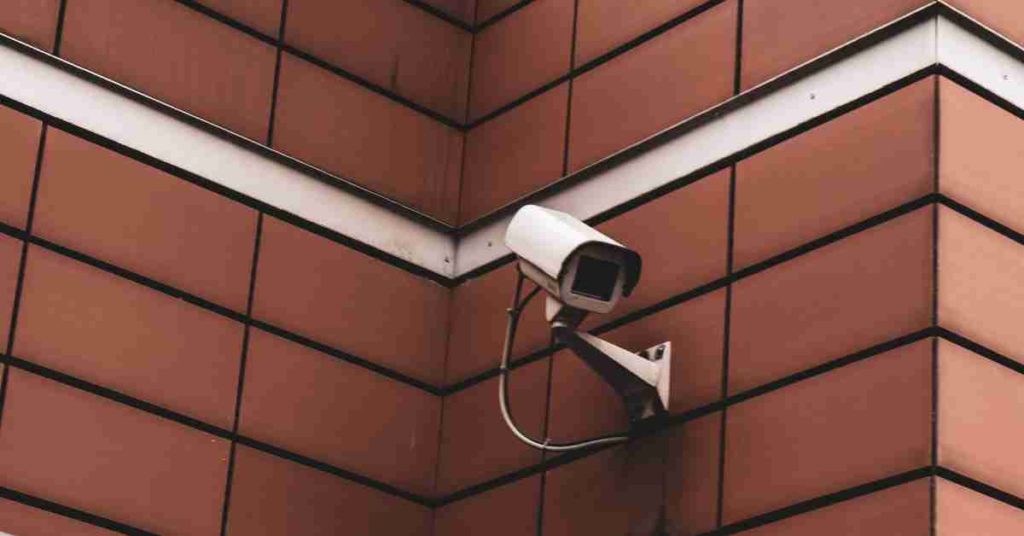
A security camera is a device that is used to monitor an area for potential threats or safety reasons. A security camera can be used in a business, home, or public place. Security cameras are often connected to a network so that footage can be monitored and recorded remotely. Security cameras are also equipped with features such as motion detection, night vision, and digital zoom so that they can capture detail at far distances.
There are many different types of security cameras available, including indoor security camera models and outdoor security camera models, far-field models like cellular trail cameras, Dashcams for vehicles, spying models including hidden home cameras and hidden in-car cameras, and many more. Moreover, security camera systems can be configured in a variety of ways to meet the specific needs of the user. Some common features found on security camera systems are:
- Video recording capability for monitoring activity in real-time
- Online streaming for instant viewing by remote users
- Day/night vision for clear footage in low-light environments
- Intelligent motion detection and tracking for detecting movement in the vicinity of the camera
- Dual microphone and noise reduction for clear audio recording during periods of high activity
Security cameras may not give you the best photo quality like interchangeable lens cameras, however, they have far more reach than Mirrorless and DSLRs and can give you photos and videos that can be of great value both for security and creative purposes. These cameras come in a variety of shapes and prices and you can easily find from cheap to expensive ones with great quality. You can easily find security cameras at a wide range of prices from Ring, Google Nest, Wyze, Swann, Lorex, Logitech, and many other brands.
Pros
- Serves security purposes other than photography.
- Great night vision.
- Great audio capability.
- Online streaming.
- Can be used for spying.
- Great AI features like motion detection and face recognition.
- Easy memory storage and cloud backup.
Cons
- Not intended for professional photography.
- Lower image quality than professional cameras like mirrorless and DSLRs.
Smartphone Camera

A smartphone camera, also known as a mobile phone camera or a cell phone camera, is the camera that comes with your remote phone device. These cameras typically use miniature lenses and sensors to take pictures and videos. Cell phone cameras are not going to replace the big cameras for serious photography. However, they are excellent for taking pictures of friends and family.
They are also useful for shooting in low-light situations or at events where you don’t want to carry a lot of gear. The pictures that you take with your cell phone camera will be limited in quality, but they will still be better than what you can get from a disposable camera. Moreover, stills and videos captured with mobile phone cameras are the easiest to share remotely on the internet and on social media like Instagram, Facebook, and YouTube via WiFi and cellular networks.
Smartphone cameras have advanced dramatically over the past few years, and now more advanced models like iPhone Max 13, and Google Pixel 4 provide you more flexibility with your photography by allowing you to clip miniature lenses to your cell phone device for a better perspective. Usually, smartphones with the best camera quality are expensive, however, the best cell phone cameras are always going to be the cheapest way of getting into photography since they are multipurpose devices and save you from buying many separate devices, for instance, a camera and a telephone. Apple, Samsung, Huawei, OnePlus, Xiaomi, Google, LG, and Oppo are some of the most famous smartphone brands.
Pros
- Affordable.
- Lightweight, portable, and versatile.
- Great for spontaneous shots.
- Some new models offer add-on lenses.
- Great accessories options.
- Easy storage and cloud backup
Cons
- Small sensor size, so images are not as sharp as a professional camera like DSLR.
- Most models come with no interchangeable lenses.
- Flash is useless, and there is no hot shoe for an external flash.
- Limited manual control.
Drone Camera
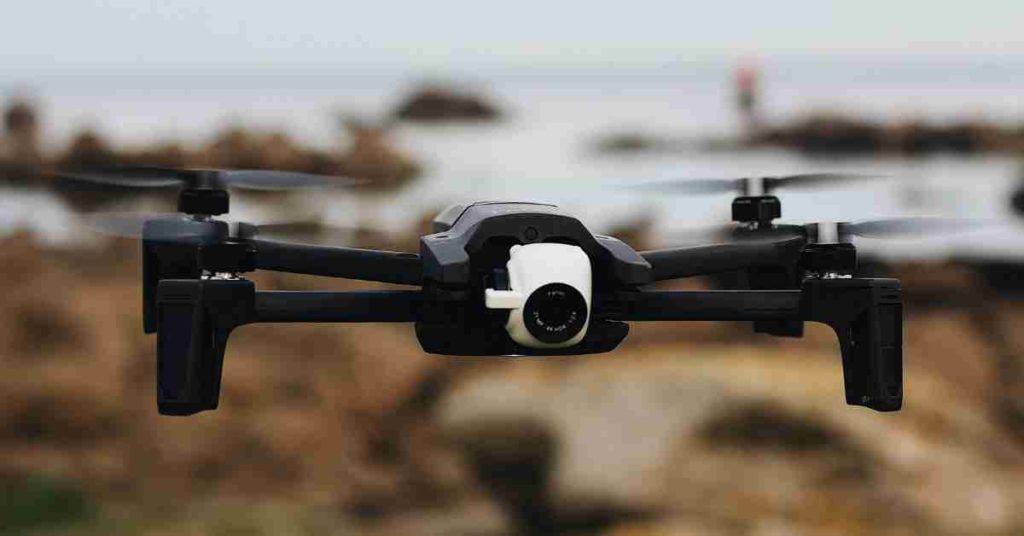
A drone camera is a type of camera that captures photographs or video footage by flying unmanned, autonomous aerial vehicles. Drones have become popular as photography devices because they offer several advantages over traditional cameras. They are portable, durable, and can be operated in difficult-to-reach locations such as tall buildings or mountainsides where other equipment would be unsuitable.
There are also various types of drones available with different capabilities for taking pictures and videos. Some are bulky and large and offer a removable camera system and can mount your DSLR, others come with their own fixed cameras. However, drones with good cameras can be very expensive. Moreover, they are best for aerial photography and may not be suitable for conventional photography like you do with your hand-held cameras. DJI, Autel, Ryze, Parrot, Holystone, and Skydio are some of the popular camera drone manufacturers.
Pros
- Can reach difficult locations.
- Can be operated remotely.
- Gives great aerial footage.
- Fun to operate.
Cons
- Expensive.
- Limited use for certain types of photography.
- Difficult to operate.
360 Camera
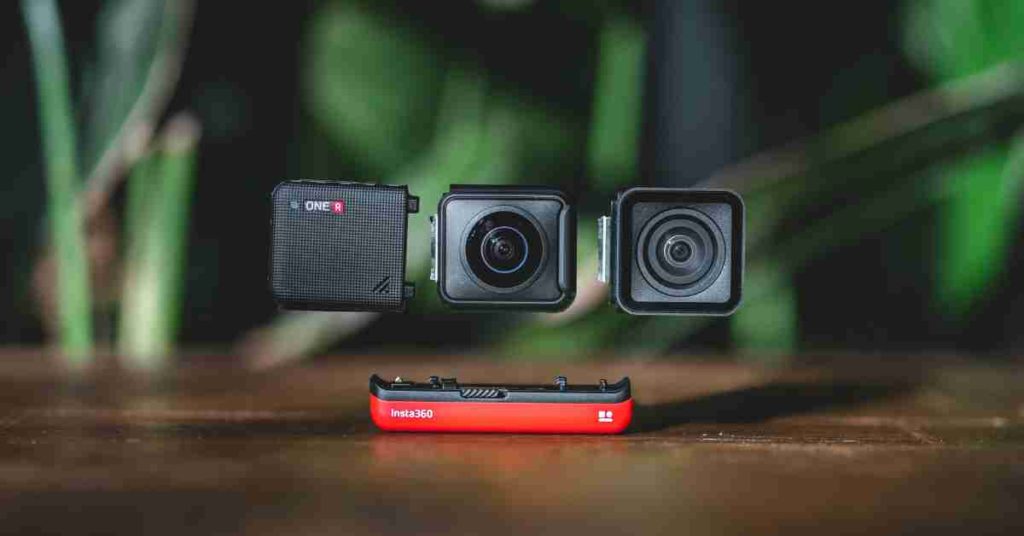
A 360 camera is a type of camera that captures images and videos in a full circle around the viewer. This format allows viewers to view both vertically and horizontally oriented footage at the same time. This means that the camera can take multiple photos or videos at different angles, which can create a 3-D effect when you view them on your computer or phone. 360-degree cameras are often used for immersive video content, such as documentaries or gaming because they allow viewers to “look inside” scenes or locations.
Additionally, 360 cameras can be used to capture photos and videos that would traditionally be difficult or impossible to take, such as 360-degree footage from inside a vehicle with a 360-degree dashcam for security purposes or capturing 360 views from a helmet camera when you are standing on the summit of a mountain. 360 cameras come in different shapes and sizes, but all feature sensors that allow them to capture stereoscopic image data. This is an exciting new technology that has many potential uses, including for video marketing and product photography.
However, 360 cameras are usually very expensive, making them an undesirable option if you’re only looking for an affordable way to take photos and videos. Some popular 360 camera brands include GoPro, Ricoh, Panasonic, Insta360, Razo, Weylens, and Rexing.
Pros
- Beautiful panoramic view and footage.
- Full 360-degree coverage.
- Realistic images.
- Multipurpose use.
- Small and lightweight.
Cons
- Expensive.
- Difficult to use.
- 360 photos can not be printed.
- Sensitive to camera shake.
Film Camera

A film camera is a photographic device that uses light-sensitive film to capture images. Film cameras are typically less expensive and less portable than digital cameras. The main feature of a film camera that makes it different from a digital camera is the use of physically exposed rolls of film instead of electronic memory storage, limiting their flexibility for how photos are edited, processed, and stored on the camera. Moreover, they usually don’t feature an electronic viewfinder (EVF), so composing a shot is all a guessing game until the developed photos come back from the lab. This can be a helping factor in developing your photography skills.
Film cameras are used for photography in traditional mediums such as photojournalism, street photography, and family snapshots. They can also be used to create art or experimental photographic projects. Some of the most popular film camera brands include Canon, Nikon, Yashika, Hasselblad, Lomography, Fujifilm, and Leica.
There are many types of film cameras available including rangefinder film cameras, compact, SLRs, and medium and large format cameras that use film sheets. There are also many options for camera film formats from different brands, however, the most prominent companies that still make photographic films are Kodak, Fujifilm, and Ilford.
Pros
- Vintage.
- Good image quality.
- Affordable.
- Lightweight.
Cons
- No monitor.
- Film and lab costs.
Camcorder

A camcorder is a portable electronic device that combines a camera and a video recorder into one unit. It records both digital video and digital audio onto removable media such as Mini DV tape, DVD-R discs, solid-state flash memory cards, and hard disk drives. Many camcorders also include the ability to take still photographs, which are stored on the same removable media. Camcorders are designed for portability and easy operation, and many models include built-in editing capabilities and special effects.
Most camcorders use a CMOS image sensor, which is a type of digital image sensor that uses an active pixel array to convert light into electrical signals. CMOS image sensors are more power efficient than CCD image sensors, and they allow for smaller, lighter camcorders. Many camcorders also include a viewfinder, which is an electronic display that shows the image that will be recorded. Viewfinders can be either LCD or OLED displays.
LCD viewfinders are common in entry-level camcorders, while OLED viewfinders are found in more expensive models. Some camcorders also have a touchscreen LCD display, which allows you to control the camera functions by touching the screen. Many camcorders also include built-in storage, which allows you to store digital video and audio files on the camcorder itself. Built-in storage is typically either in the form of a hard drive or flash memory.
Hard drives are common in high-end camcorders, while flash memory is more common in entry-level and mid-range models. Some camcorders also have the ability to record directly to a computer via a USB or FireWire connection. Recording to a computer allows you to edit and store your videos on the computer, and then burn them to DVD or Blu-ray disc. Camcorders can be used for a variety of purposes, such as making home movies, recording family events, and even shooting professional-quality videos.
Pros
- Can record video and audio
- Typically very portable
- Many models include built-in storage
- Some models can record directly to a computer
Cons
- More expensive than a regular digital camera
- Video quality may not be as good as a dedicated video camera
- Battery life may be shorter than a regular digital camera








